
|   |

|   |
Guru CV Chandrasekhar - Ashish Mohan Khokar, Bangalore e-mail: khokar1960@gmail.com April 29, 2010 He has lived a life full of dance colours; no wonder one finds him in attractive and unusual coloured kurtas when one sees him! Emerald green, Black Forest, shining maroon… all with nice tussar shawls thrown in for effect. It is his overall aesthetics and his dance stamina that inspire many. When he takes to the stage and does a tillana or a varnam, he can put a thirty year old to shame when dancing. His art springs from discipline and dedication. Meet the redoubtable Guru CV Chandrasekhar. As he turns 75 on 22nd of May 2010, Guru CV Chandrasekhar (Chandru Anna, as he is fondly referred to), can look back on a fulsome life, dedicated to dance. Born in Simla on May 22, 1935, where his father Rao Sahib (a title given by the Britishers) VAV Iyer, who was in govt. service under British India and mother Kamala were stationed, Chandru Anna was part of 8 siblings, 2 sisters and 6 brothers. As he was number 7, he was considered lucky! Early years were spent in Simla and Delhi and schooling was done in MEA. There was no dance in the family, though like in most south Indian families, Carnatic music was learnt and appreciated. His father was not happy with Delhi culture (or lack of it!) and wrote to Madurai Subramanya Iyer regarding his lucky 7 son, imbibing the arts properly. MSI post haste recommended Kalakshetra in Madras. Thus, Chandru Anna found himself at Kalakshetra in 1945, where he stayed for 9 years, till 1954. Sarada Hoffman, Anjali, Lalitha were all students at the same time. In the first year, he learnt only music from TK Ramasami Iyengar. It was only in 1946 that dance training began. Peria Sarda and Dandayudhapani Pillai were his teachers. When his father retired in 1947 on 1st April (4 months before Independence), the family shifted to Coimbatore. The Tamil spoken and practiced in this region is far softer and poetic than rough Madras! Where yedai-madai-podai is common now…. Along with dance, Chandru Anna went through normal education, finished his high school in 1950, and finished his B.Sc in 1954 from the Vivekananda College, all the time also pursuing dance at Kalakshetra. M.Sc followed after that, though in Benaras, and he finished with that in 1956. During this period of study, he had two significant opportunities: to visit Delhi in 1954 and win the Inter College competition and stand first! And go to China, selected by Sir CP Ramaswami Iyer, as part of a cultural troupe.  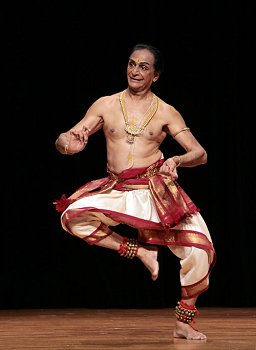 "Suhasini Mulgaonkar sang and I danced!" Those days it was rather innocent but as he had exposure to north India and knowledge of Hindi, his Tamil roots helped him reach out wider. "I had an old record of Natanam Adinaar of Ram Gopal and boy, did I dance to it, endlessly!" recalls this veteran artiste. "After M.Sc., like all good students and Indians, I did not know what to do?! While vacationing in Coimbatore, Rukmini Devi athai called and offered me my first job! For 3 months. That sounded prestigious, to dance and travel with India's premier dance school. I wanted to teach. Born in the hills, when I saw an advertisement offering a job at Manav Bharati in Mussoorie, teaching Biology, English and Dance, I jumped at it. I was there for a year. After that a chance to do my Ph.D in Botany under Dr. Mishra delighted me but as he had some problems with the university, I had to leave it midway. 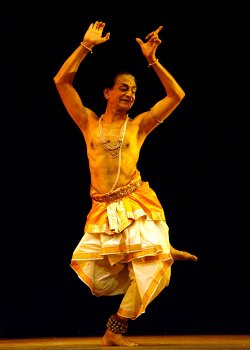 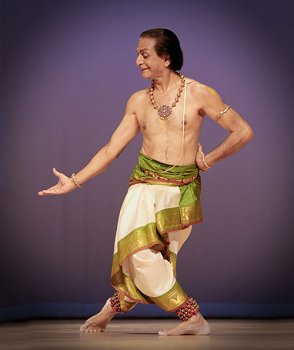 In 1962, I married Jaya, who had learnt under Lalitha-ma and from Birju Maharaj at the Sangeet Bharati in Delhi. Rani Karnaa and Jaya were classmates. Those days, Rani performed a lot in Delhi and also did lec-dems with SK Saxena sahib (these were 4 brothers all with the initials SK! Sarveshwar Kumar, Siddheshwar Kumar, Sushil Kumar….Saxena, so even in Baroda it was confusing as one had to say which one!). From 1962-79, we lived in Benaras… a long innings indeed. University jobs were secure and gave us enough time to travel in vacations and also dance. Chitra, our first, was born in 1963 in Delhi and Manjari in 1967 in Benaras. They had their schooling in Benaras. Both my girls learnt Bharatanatyam. In 1974 Chitra's arangetram took place in Chennai and all were there to bless her, including athai. Manjari's arangetram took place in 1981. Both are sincere students of the art and have served it devotedly. In 1980, chance led me to apply and get the post of Head of Dance Dept, Baroda University, where the legendary Mohan Khokar, also a Kalakshetra alumni, had first stepped in 1950 and set the course and stayed until he was taken by the Education Ministry in Delhi and appointed at the Sangeet Natak. I stayed in Baroda till 1992. My retirement was due in 1995 but I left earlier as wanted to devote time to travel, dancing and teaching. 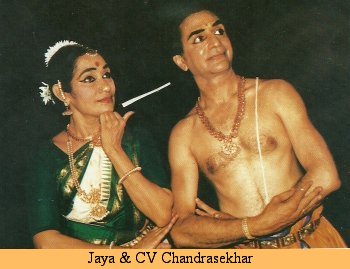 I have done Bharatanatyam to Hindustani music and even Gujarati poetry but that's to make it acceptable and understandable in an alien setting. I never compromised on its grammar or content. I broke ground with Ritu Samhara, I conquered with Bhoomija. Under my wife's banner Nrityashree, we produced Meghadootam, Aparajitha, Pancha Maha Bhootam, Aarohanam, Govinda Biridavali, Bhanvar Geet etc. For the occasion of National Science Congress, our VC, then Dr Parikh, felt some work based on Gujarati poetry would be welcome, so Vasanta Vilasa and Kunwar ni Mameru shaped up. After taking premature retirement, I have performed more in last 15 years than ever before! I am happy with my students. My seniors value me, gurus like akka MK Saroja sends me her senior students, especially males like Udai, to polish and train further as she says my style and training are exacting. Having taught mainly in 2 cities viz Varanasi, a very conservative city, and Baroda, a city where dance is learnt not to become dancers, the number of students, who have made a name are few. Of course, Chitra and Manjari are our prime students, who have made dance their career. Of my Banaras students, Dr Madhurima Chowdhary, retired as Professor and Head of the dance dept. ofKhairagarhUniversity, Dr.Layaleena Bhat is a Reader in Dance at BHU. In Baroda, only Rema Srikant has made a name anda very substantial contribution to dance in Gujarat and Baroda in particular. None of the other good dancers have continued to perform but ended up as teachers all over Gujarat and other places. Since shifting to Chennai, the dancers who have really made a good impact are Krishna Chidambaram, Renjith Babu, P Praveen Kumar, Sajilal. My Japanese students who have made a name for themselves are Maki Fukuda, Yoko Matsushita, the couple Sachie & Satoshi Tatsumi. Win Thang from Paris (sent to me by MK Saroja) isturning out to be an excellent dancer and sure to make it big. Chitra and Manjari are very dedicated to their profession. In spite of being trained under us, their style is very individualistic and not our replicas. Their nritta is very neat and abhinaya very deep. They are traditionalists but very creative and open to accept new challenges. They do not seek recognition but want recognition to come to them by their own merit. They have both performed very widely, the numbers going into 4 figures, their depth into rhythm, literature and music, both Carnatic and Hindustani is very strong. Their exposure and interaction with great artists in the fields of visual and performing arts have developed them into mature artists. As their teacher and not as a parent, I hope their skill and contributions will be duly recognized. Changes in dance and in tradition will come; what is important is to have a firm foundation. The grammar of classical dance is its soul. Just doing some new fangled stuff on stage means nothing and is hardly even remembered. The beauty and essence of Indian classical dance, lies in its tradition. Dance is my mission. I have been given some awards that I value like the Kalidas Samman and the Akademi Award. My students and wider family of dance love me and that's my biggest reward. As I turn 75, I'm happy that dance gave me direction, mission and vision for life." 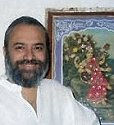 Ashish Mohan Khokar has made writing and recording dance history his mission. As a merit-lister in M.A. History from the Delhi University, he loves the process and technique of writing history and its reconstruction. He is the most sought-after biographer because of this and his 30 years of direct dance writing, with 35 published titles to credit, makes him India's reputed dance historian. With practical background in dance and theory, his opinions are much sought after and respected. He wrote as dance columnist for many magazines like India Today, First City and Life Positive. He was the dance critic of the Times of India in Delhi, then Bangalore, before starting his own dance journal - attendance - now in its 12th year of publication. As India's pioneering arts administrator way back in mid-eighties, he served the Delhi State Akademi and the Festivals of India in France, Sweden, Germany and China and worked as one of the Directors at INTACH, under PM, Rajiv Gandhi's chairmanship. He is currently on many committees and boards, nationally and internationally. attendance-india.com; dancearchivesofindia.com |